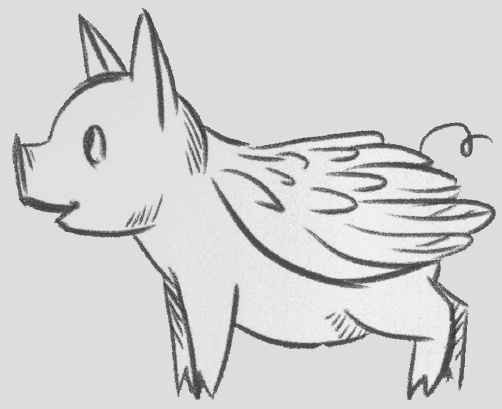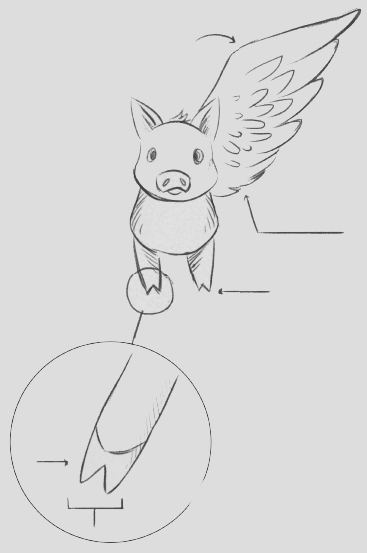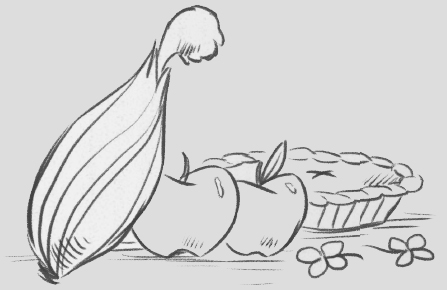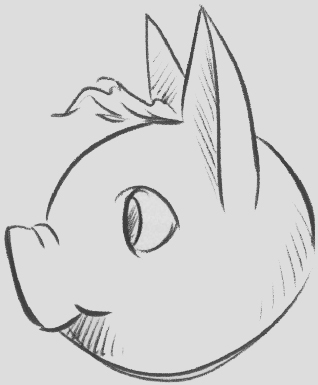
Chapter 3

While Bob finished feeding the magical animals, Maggie sat on an overturned bucket and looked through the journal. Leonard munched his grain, twitching his ears each time she turned a page.
Flying Pigs
Most common wing colors: white, gray, pale blue, speckled black, spotted pink
Behavior: often travel in clusters of at least three pigs. Rarely seen at night. Believed to nest high up in tall trees. Rarely observed sleeping.

Bad habits: eating plants they shouldn’t, rooting up gardens, smearing mud on things. This is particularly troublesome when they appear in large groups.
Habitats: muddy riverbanks; muddy fields after a heavy rain; mud anywhere; cornfields; apple orchards; barley, alfalfa, or clover fields; around beehives; well-shaded forests
Ailments: prone to sunburn and skin conditions such as excessive dryness and rashes. Often get hoof rot from wet mud. Wallowing in mud may cause damage to wing feathers.

Favorite foods: corn, apples, barley, alfalfa, clover, stolen fruit pies

What to do to prevent flying pig infestation: flying pigs do not like shifting light patterns or bright, contrasting colors. To shoo them away, flap a brightly colored cloth in the air. To keep them away, hang strips of brightly colored fabric from a line strung between two poles.
Beware of flying pigs that appear to be thinking. They are smarter than they look.

Bob came back just as Maggie finished reading the journal entry. “Thank you for showing this to me,” she said, handing the journal to him. “I think I know what to do now.”